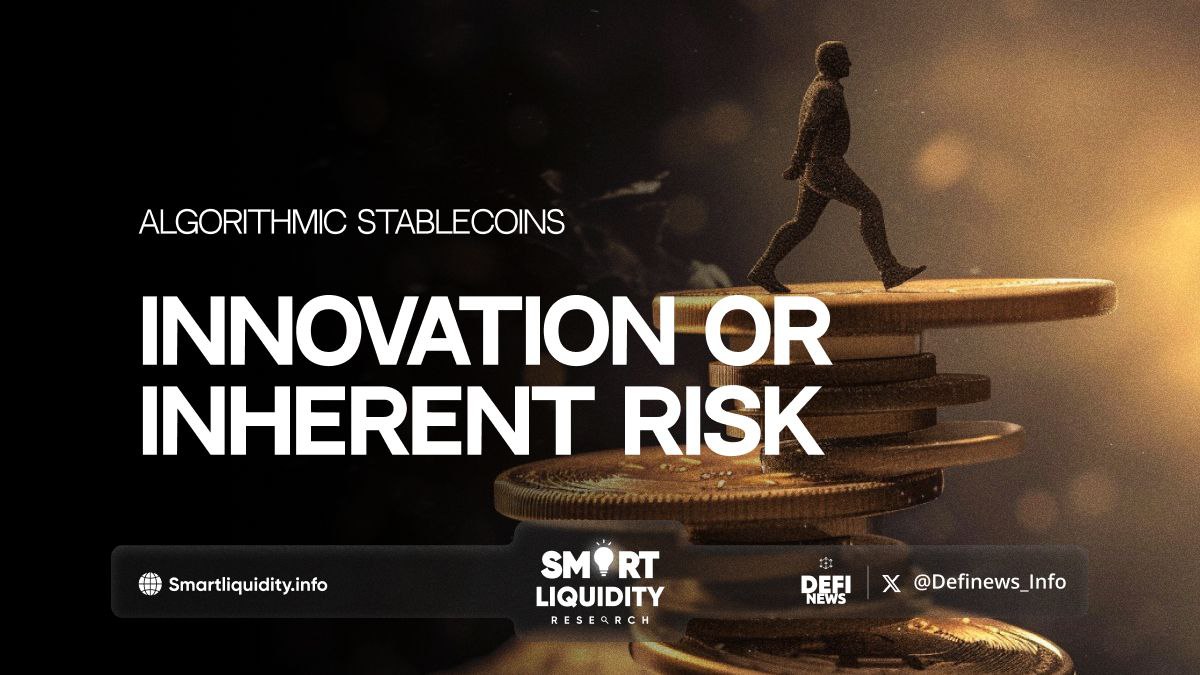Algorithmic Stablecoins: Innovation or Inherent Risk


Algorithmic Stablecoins: Innovation or Inherent Risk! The rise of decentralized finance (DeFi) has spurred a wave of innovation in the cryptocurrency space, with algorithmic stablecoins emerging as one of the most intriguing developments. Unlike traditional stablecoins, which are pegged to a reserve asset like the U.S. dollar, algorithmic stablecoins rely on complex algorithms to maintain their value.
This approach offers a new level of decentralization and capital efficiency, but it also introduces significant risks that have led to high-profile failures. This article explores the innovation behind algorithmic stablecoins and the inherent risks that come with them.
The Innovation Behind Algorithmic Stablecoins
Algorithmic stablecoins are designed to maintain a stable value without being backed by fiat reserves or other collateral. Instead, they use algorithms and smart contracts to adjust the supply of the stablecoin in response to market demand. The goal is to create a self-sustaining, decentralized stablecoin that can withstand market volatility.
One of the key innovations of algorithmic stablecoins is their ability to achieve capital efficiency. Traditional stablecoins require a 1:1 backing of fiat currency or other assets, which ties up capital and limits scalability. In contrast, algorithmic stablecoins can theoretically expand and contract their supply without needing a reserve, allowing for greater flexibility and potential growth.
Projects like Terra’s UST and Ampleforth have shown how algorithmic mechanisms can be used to create stablecoins that adjust their supply based on market conditions. Terra, for example, used a dual-token system where the stablecoin (UST) was balanced by a volatile token (LUNA) to absorb price fluctuations. Ampleforth uses a rebasing mechanism, adjusting the number of tokens in circulation to maintain a stable value.
The Risks Inherent in Algorithmic Stablecoins
While the innovation behind algorithmic stablecoins is impressive, it comes with significant risks. The most prominent is the potential for a “death spiral” in which the stablecoin loses its peg, leading to a rapid decline in value.
The collapse of Terra’s UST in May 2022 is a stark reminder of this risk. When UST began to lose its peg, the algorithm required more LUNA to be burned to restore the peg. However, as confidence in the system eroded, the value of LUNA plummeted, creating a feedback loop that led to the collapse of both UST and LUNA.
Another risk is the reliance on market psychology. Algorithmic stablecoins often depend on users’ belief in the system’s ability to maintain stability. If confidence wanes, the stablecoin can quickly lose its value, as seen in the case of Iron Finance’s TITAN token.
Furthermore, the complexity of algorithmic stablecoins can make them difficult for the average user to understand. This lack of transparency can lead to unforeseen risks, as users may not fully grasp the mechanics of how these stablecoins operate.
Balancing Innovation with Risk Management
The potential of algorithmic stablecoins to revolutionize the stablecoin market cannot be denied. Their ability to achieve decentralization and capital efficiency makes them a compelling alternative to traditional stablecoins. However, the risks associated with these systems must be carefully managed.
One approach to mitigating risk is the development of hybrid models that combine algorithmic mechanisms with collateralization. For example, Frax uses a partially collateralized model, where the stablecoin is backed by a combination of fiat reserves and an algorithmic mechanism. This provides a safety net in case the algorithm fails to maintain stability.
Another potential solution is improved governance and transparency. By making the mechanisms and risk factors of algorithmic stablecoins more transparent, developers can help users make informed decisions and reduce the likelihood of panic selling.
In Summary
Algorithmic stablecoins represent a fascinating intersection of innovation and risk in the world of DeFi. While they offer the promise of greater decentralization and capital efficiency, they also come with significant challenges that must be addressed. As the crypto industry continues to evolve, finding the right balance between innovation and risk management will be crucial to the success of algorithmic stablecoins. Whether they will ultimately prove to be a transformative force or an inherent risk remains to be seen.




